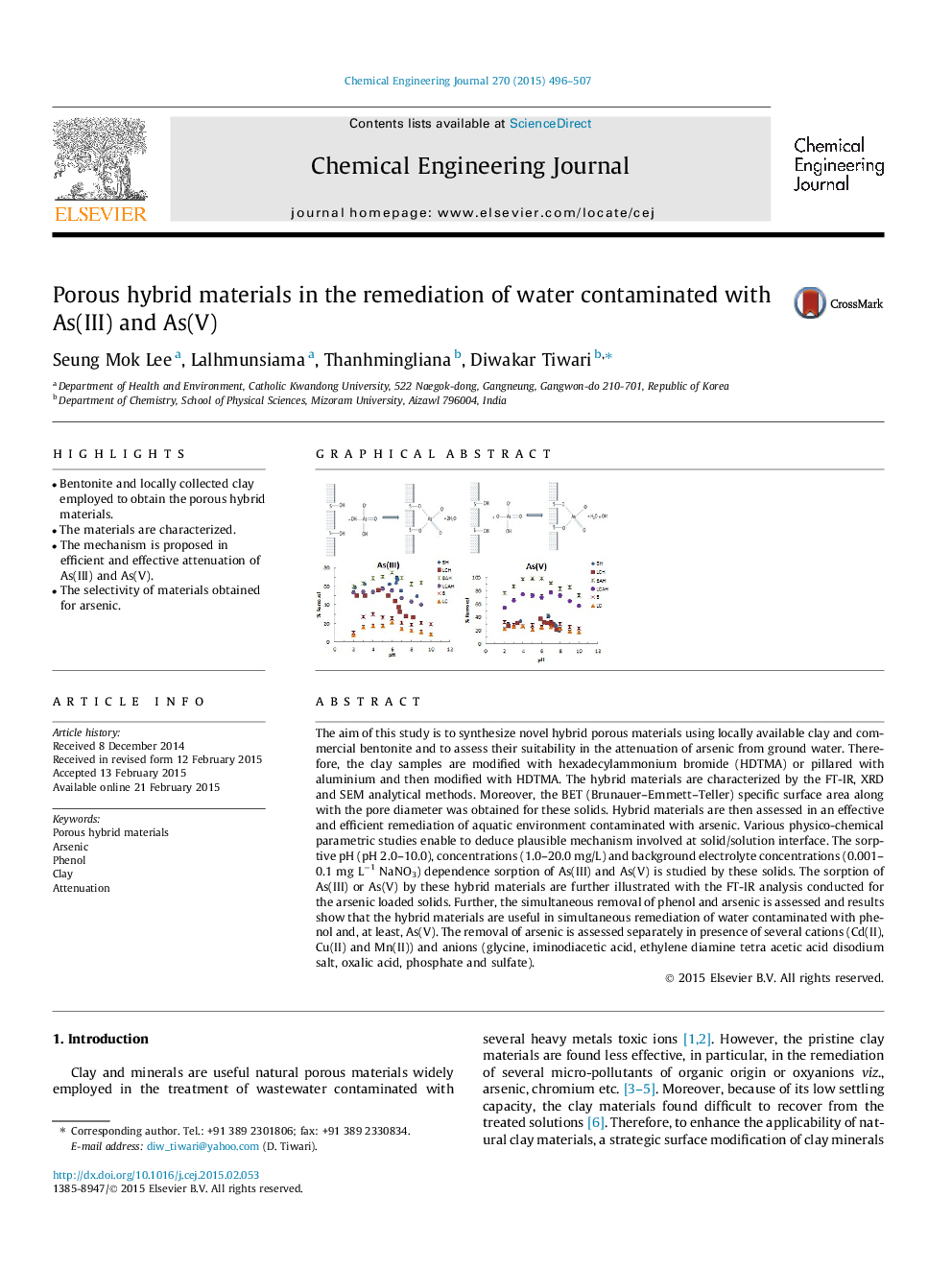| کد مقاله | کد نشریه | سال انتشار | مقاله انگلیسی | نسخه تمام متن |
|---|---|---|---|---|
| 146468 | 456371 | 2015 | 12 صفحه PDF | دانلود رایگان |

• Bentonite and locally collected clay employed to obtain the porous hybrid materials.
• The materials are characterized.
• The mechanism is proposed in efficient and effective attenuation of As(III) and As(V).
• The selectivity of materials obtained for arsenic.
The aim of this study is to synthesize novel hybrid porous materials using locally available clay and commercial bentonite and to assess their suitability in the attenuation of arsenic from ground water. Therefore, the clay samples are modified with hexadecylammonium bromide (HDTMA) or pillared with aluminium and then modified with HDTMA. The hybrid materials are characterized by the FT-IR, XRD and SEM analytical methods. Moreover, the BET (Brunauer–Emmett–Teller) specific surface area along with the pore diameter was obtained for these solids. Hybrid materials are then assessed in an effective and efficient remediation of aquatic environment contaminated with arsenic. Various physico-chemical parametric studies enable to deduce plausible mechanism involved at solid/solution interface. The sorptive pH (pH 2.0–10.0), concentrations (1.0–20.0 mg/L) and background electrolyte concentrations (0.001–0.1 mg L−1 NaNO3) dependence sorption of As(III) and As(V) is studied by these solids. The sorption of As(III) or As(V) by these hybrid materials are further illustrated with the FT-IR analysis conducted for the arsenic loaded solids. Further, the simultaneous removal of phenol and arsenic is assessed and results show that the hybrid materials are useful in simultaneous remediation of water contaminated with phenol and, at least, As(V). The removal of arsenic is assessed separately in presence of several cations (Cd(II), Cu(II) and Mn(II)) and anions (glycine, iminodiacetic acid, ethylene diamine tetra acetic acid disodium salt, oxalic acid, phosphate and sulfate).
Figure optionsDownload as PowerPoint slide
Journal: Chemical Engineering Journal - Volume 270, 15 June 2015, Pages 496–507